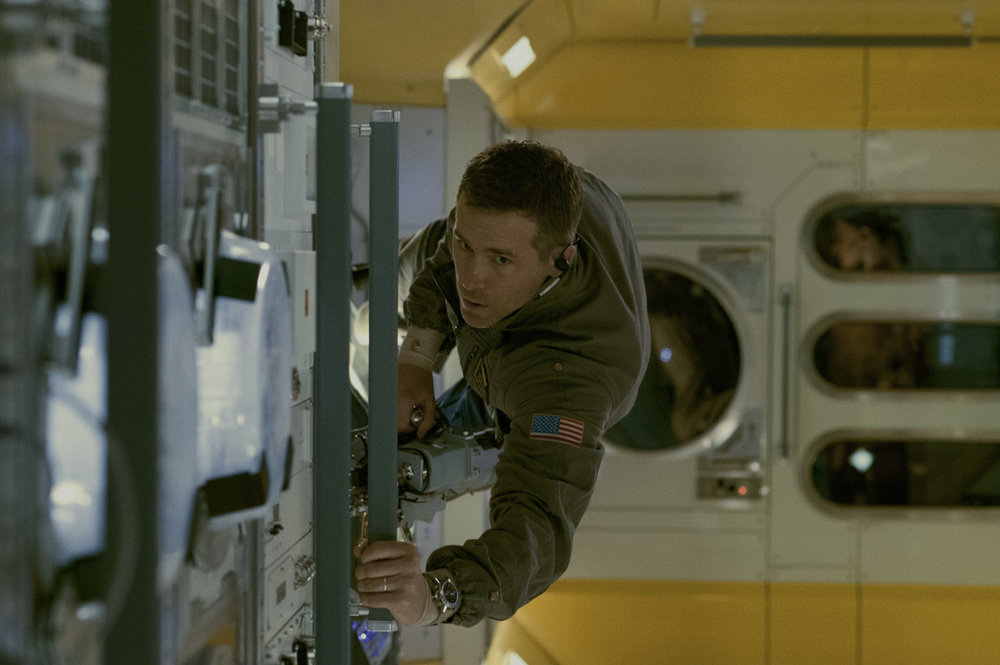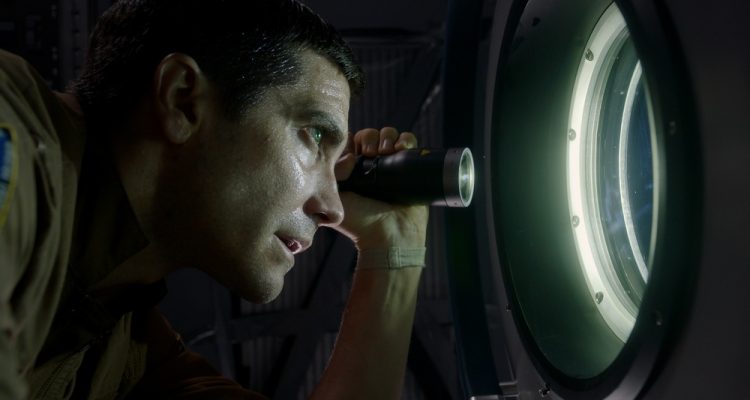The whole murderous-alien-aboard-a-spaceship trope has been around since at least 1958’s “It! The Terror From Beyond Space,” which was initially viewed as a typical, below-average drive-in movie about a doomed Mars expedition. Of course, that movie suddenly took on more importance when the creative team behind “Alien” cited it as a major inspiration. Since “Alien,” of course, there have been countless riffs on this idea (including a handful of actual “Alien” sequels and spin-offs) — a ragtag crew of space explorers or profiteers venture into some darkened corner of the galaxy in the name of scientific progress or capitalism, unwittingly encounter vicious otherworldly killing machines, and get turned into bloody zero-G globs. It’s so ingrained in popular culture that it’s up there with “boy meets girl” in terms of hallowed Hollywood traditions. What makes “Life” genuinely shocking is that it adheres so closely to the formula without deviation, reinvention, or reflection. It’s simply a murderous-alien-on-a-spaceship movie. That’s it. And, it turns out, that’s okay.

“Life” takes place on an international space station orbiting Earth. As the movie opens, it’s intercepting a capsule that has come back from the surface of Mars with valuable, hopefully monster-free soil samples. The six-person staff, made up of the sexy CDC officer (Rebecca Ferguson), the sexy doctor (Jake Gyllenhaal), the sexy technician (Hiroyuki Sanada), the sexy scientist (Ariyon Bakare) and the sexy captain (Olga Dihovichanaya) immediately start studying the soil. (Ryan Reynolds is also a part of the crew and very sexy, but it’s pretty unclear what he actually does on the space station.) Soon enough, they’ve awoken some kind of dormant organism, one that a crew member marvels is “all muscle, all brain, all eye.” They report back to Earth on their amazing discovery and the planet rejoices; a small child from New York beams back to the space station that they’ve named it Calvin, after their school, Calvin Coolidge. Calvin, meanwhile, is growing at an alarming rate and (since you know what kind of movie this is) whittling down the crew of the space station, one by one. That’s it.
All of the actors perform gamely, although their back-stories aren’t as evenly distributed as you’d like. Bakare is a scientist who is paralyzed from the waist down; space offers him the chance not only to indulge in his professional passion, but move in a way he was never afforded on Earth (he also grows uncomfortably attached to the organism). Sanada, so memorable in Danny Boyle‘s own sci-fi horror vehicle “Sunshine,” has a wife who has just given birth on Earth (he watches her delivery via an iPad with a very strong wifi signal). And Gyllenhaal, his giant eyes taking on a positively planetary dimension, plays a doctor with the military who has essentially been hiding out on the space station. He’s been scarred by his tours and has set the record for being in space the longest, to the point that it’s starting to make him ill. It’s a perfect role for the deeply emotive performer; this is a character that is literally too sensitive for Earth. But other characters you know virtually nothing about. Ferguson, who is able to convey a lot with so little, is a stuffy by-the-books scientist more worried about “firewalls” than her fellow humans, but remains frustratingly aloof. Dihovichanaya is given nothing, which is a shame because she has a lot of presence. And Reynolds seems to only be making an appearance because Rhett Reese and Paul Wernick, the writers of “Deadpool,” also wrote this.

And speaking of Reese and Wernick, knowing that these two writers, whose entire career has been built upon winking, deconstructionist takes on everything from zombie movies (“Zombieland“) to action pictures (“G.I. Joe: Retaliation“) to superhero fare (“Deadpool“), penned “Life,” it’s easy to assume that they would have some kind of wise-ass take on the genre. But they don’t at all. There are hardly even any jokes. This is about as straightforward a science-fiction movie as you can get, with selfless acts of courage, large-scale destruction, and last minute “surely this will kill it” heroics. If there’s something going on here that’s undermining what’s come before, well, it’s so subversive that it’s barely perceivable.
So the question remains: why make “Life” if there’s really nothing all that new?

Well, for one, it’s a huge technical accomplishment. The movie opens with a single gliding shot through the space station that introduces the characters and sets up the geography for the rest of the film; it’s clearly not as expensive or accomplished as something like “Gravity,” but the effect of establishing both the characters and the environment, with a combination of dread and awe, is similarly effective. Seamus McGarvey, the cinematographer best known for his work with director Joe Wright, shoots “Life” gorgeously. And the creature itself is the kind of technological marvel that would have been impossible in the days of rubbery men in suits. It starts off as a single-celled organism and mutates into a collection of malevolent rose petals before growing into something nasty and Lovecraftian. By the end it’s a terrifying mass of tentacles and wings; the fact that you can’t look it in the eyes or know what it’s feeling makes it even more grotesquely scary.
And talented Swedish director Daniel Espinosa, coming off the turgid historical thriller “Child 44” (please, let us never speak of it again), seems to revel in the fact that he’s making a 100-minute matinee movie. (The score by regular Espinosa collaborator Jon Ekstrand is gloriously over-the-top.) There are moments of genuine white-knuckle suspense and set pieces that are elaborately constructed and dutifully executed. Sure, there are a couple of moments that would have benefitted from having more time to breathe (like a sequence where another spaceship comes to aid the station), and there’s the aforementioned issue with the characterization being somewhat unbalanced, but there’s just as much to be said for a movie that goes in, fucks shit up, and gets out as quickly as possible. Movies today are too long and overstuffed; “Life” is lean, mean, and terrifying. It doesn’t have much to say beyond “hold up, maybe we shouldn’t poke around uncharted terrain so much,” but with actors this committed, set pieces this exciting, and direction this confident, it doesn’t really matter. It’s a B-movie through and through, and it knows exactly what it is. To quote another movie currently in theaters, choose “Life.” [B]
Click here for our complete coverage of the 2017 SXSW Film Festival

